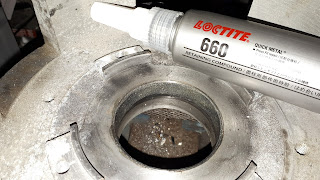To make sure that the new motor installation works properly I decided to build the car ready for a test drive with its current battery voltage of 76,8V. There was only a few things to finish up before the first meters could be driven with the Kostov K9HV motor installed.
Rebuilding the motor controller caused lack of space in its enclosure so the throttle pedal could not be located there anymore. The solution was to replace Corolla's original throttle pedal with a hall throttle. The hall pedal was mounted in a holder made from steel tube. The throttle pedal cable stays well protected inside the holder.
After a half year of staying inside the garage the Corolla finally got some fresh air:) It was exciting to test both the motor and also its new controller. The first notices were that the motor mounting had succeeded much better than with the ME1003, I could hear the motor RPM, but I could not feel its vibrations, excellent!
The controller worked also as well as I could have hoped for. The maximum power draw was 15kW just as it should with this battery voltage and the controller's current settings. That maximum power should nearly double after setting Corolla's front and rear battery packs in series, resulting into a battery voltage of 153,6V. There was also plenty of torque available. It was a slippery day and the drive wheels started to slip with any higher than 200A motor current on 2nd gear.
There is always something needing improvement; slight oscillation occurred during a slow acceleration. This is most likely caused by too high gain parameters in the motor controllers current PI-controller. These parameters will be tuned after the Corolla's battery voltage has been doubled. Knowing that the basics are ok with these voltages I can now start making the changes needed to double the voltage being more suitable to the K9HV motor.















































